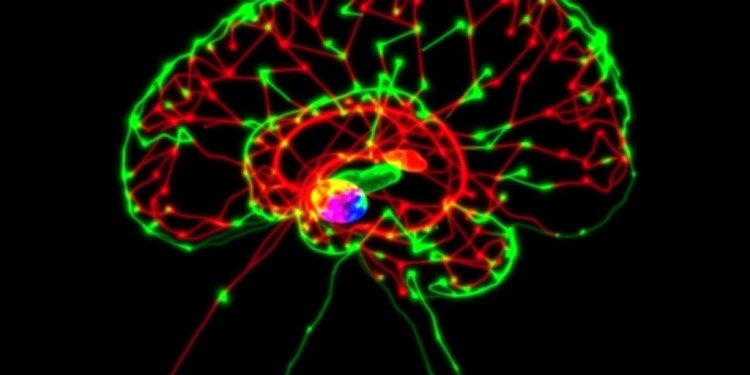
Researchers from the renowned Karolinska Institutet have made significant strides in understanding the formation of the nervous system and sensory organs during embryonic development. This groundbreaking research introduces a method that leverages a genetic ‘barcode’ to trace the development of stem cells in embryos—specifically focusing on how the inner ear structures are generated in mice. The implications of this study, recently published in the prestigious journal Science, could be monumental in shaping future treatments for hearing loss, a condition affecting countless individuals worldwide.
The essence of this research lies in the innovative application of a viral vector to deliver a genetic barcode, enabling researchers to mark stem cells at a critical early stage of embryogenesis. This viral injection allows for the unique code to integrate seamlessly into the stem cells’ genome. It then continues to be replicated through cell divisions, effectively allowing scientists to follow the lineage of these cells as they differentiate into various types of neurons and specialized cells necessary for hearing. This approach not only sheds light on inner ear development but also contributes to a broader understanding of the complexities involved in the formation of the nervous system.
Emma Andersson, a leading researcher from the Department of Cell and Molecular Biology, passionately emphasizes the study’s revelations, stating that it elucidates how various cell types emerge from embryonic stem cells. The meticulous documentation of cellular lineage creates what Andersson describes as a “family tree” for the cells populating the nervous system and inner ear. This lineage tracing is critical, as it provides insights into how certain structures are organized and assembled during embryonic development, an aspect not thoroughly understood until now.
Moreover, the findings underscore the notion that cells responsible for auditory function predominantly originate from two main types of stem cells. This insight is pivotal as it not only deepens our understanding of developmental biology but also opens new avenues for therapeutic strategies aimed at repairing or replacing damaged cells associated with hearing loss. Such a targeted approach could revolutionize the treatment landscape, making significant inroads toward effective interventions for individuals suffering from auditory impairments.
In pursuing the origins of these ear cells, Andersson and her team have taken considerable steps toward decoding the intricate processes that dictate cell fate in embryonic tissues. By leveraging barcoding technology, they have generated invaluable data elucidating how certain cellular pathways are activated. Consequently, this expands the horizon for further exploration into potential treatments for hearing loss, suggesting that future research could be directed towards methods aimed at regenerating cells lost due to injury or disease.
Looking forward, the research team envisions applying this innovative barcoding technique to explore other regions of the nervous system and perhaps even different parts of the body. The potential to unravel the mysteries surrounding neurodevelopment and organogenesis is profound and could lead to groundbreaking discoveries in various genetic and developmental disorders. There’s an optimism within the research community that such methods can pave the way for enhanced understanding and therapeutic strategies targeting a range of congenital disabilities.
In addition to advancing scientific knowledge, this method promises to contribute to ethical research practices by reducing the number of mice required for experimentation. As the scientific community increasingly emphasizes humane research methods, this technique aligns with the goals of minimizing animal use while maximizing the quality of research outcomes. By utilizing genetic barcoding, researchers can glean more information from fewer specimens, creating a win-win scenario for both ethical considerations and scientific inquiry.
As Andersson and her colleagues continue to investigate the development of the nervous system, they remain acutely aware of the challenges that lie ahead. Despite creating a clearer picture of embryonic development processes, they acknowledge that many complexities still exist. The genetic interactions and environmental factors influencing cell fate during various stages of development are intricate and not entirely understood. This ongoing inquiry into developmental biology remains at the forefront of scientific research as researchers strive to fill knowledge gaps and foster advancements in regenerative medicine.
The study not only highlights the collaborative efforts of Andersson, her postdoctoral fellow Jingyan He, and former PhD student Sandra de Haan but also reflects the broader commitment of Karolinska Institutet to pioneering research in the life sciences. Funded by a diverse array of institutions and organizations, including the European Union and the Swedish Research Council, the research underscores the importance of interdisciplinary collaboration in tackling complex biological questions.
The potential benefits of these findings extend beyond just the realm of hearing loss. They could have broader implications for understanding neurological disorders and developmental pathologies. As researchers decipher the precise mechanisms behind cell development, therapeutic strategies may emerge that could address hereditary diseases or cellular malfunctions leading to various health issues. The continued exploration of genetic methodologies can result in enhanced methodologies for treating debilitating conditions, signaling a promising future for developmental in medicine.
In conclusion, the newly developed genetic barcoding method represents a significant leap forward in our understanding of embryonic development of the inner ear and the nervous system. By tracing cell lineage and understanding how different cell types emerge and organize, researchers are setting the stage for a paradigm shift in potential treatments for hearing loss and beyond. As the scientific community continues to unveil the complexities of developmental biology, the implications of this research could lead to transformative advancements that profoundly impact human health.
Subject of Research: Animals
Article Title: Ectoderm barcoding reveals neural and cochlear compartmentalization
News Publication Date: 4-Apr-2025
Web References: Science
References: None available
Image Credits: None available
Keywords: Embryogenesis, Stem cell development, Genetic methods, Inner ear, Hearing loss, Neuroscience, Developmental biology, Nervous system.
Tags: advancements in developmental biologybrain development mechanismsembryonic nervous system developmentgenetic barcode tracing techniquehearing loss treatment innovationsimplications for auditory healthinner ear formation in embryosKarolinska Institutet research findingslineage tracking of stem cellssensory organ development studiesstem cell differentiation in miceviral vector applications in research





